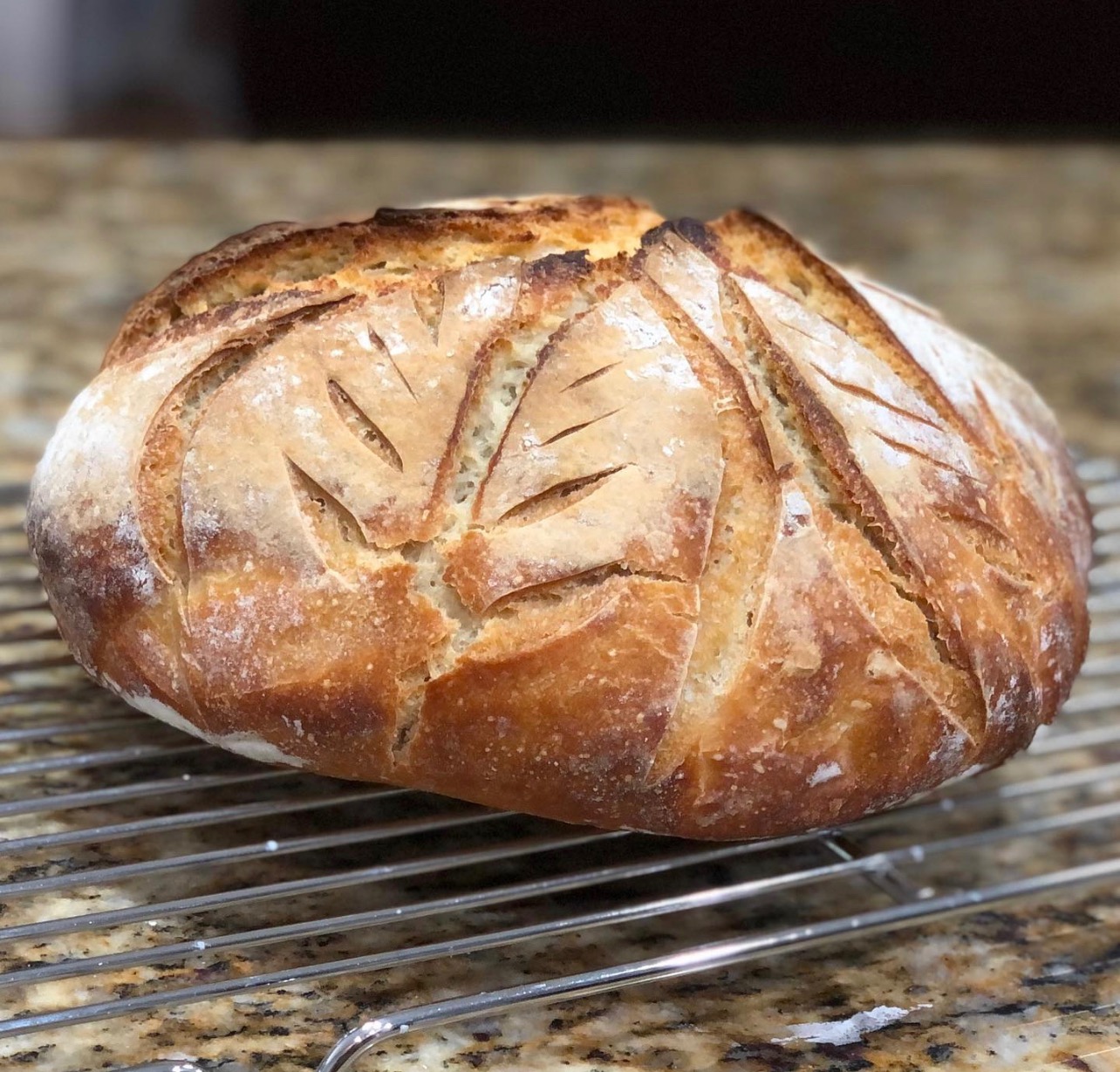Sourdough bread is one of the most versatile, flavorful, and historic breads you can make at home. Unlike traditional loaves, sourdough requires no commercial yeast—just flour, water, and time. Whether you’re using it to elevate a sandwich or serve it with soup or pasta, sourdough can easily replace store-bought bread in your kitchen.
The Many Uses of Sourdough Bread
Sourdough isn’t just for toast. Its tangy flavor and hearty texture make it a perfect match for:
- Breakfast toast with butter or jam
- Rustic sandwich bread
- A side for hearty soups or creamy pastas
- A base for bruschetta or crostini
Infuse Sourdough with Fresh Herbs for Flavor
To take your homemade sourdough up a notch, try incorporating fresh herbs like rosemary, thyme, or basil from your garden and pair it with annatto oil for a flavorful loaf that’s both rustic and refined. It adds depth, aroma, and a personalized touch to each loaf—making every slice feel special.
A Timeless Tradition Worth the Effort
Sourdough is more than just a bread; it’s a connection to the past. As one of the oldest forms of naturally leavened bread, baking sourdough is both an art and a tradition. Once you’ve experienced its flavor and texture, you may never go back to commercial bread again.
iBuen provecho!
We independently select all of the products we feature on Domestic Gourmet and may earn an affiliate commission when you purchase through links on this site.

Easy Dutch Oven Sourdough
Equipment
- Banneton Basket (can be substituted with a glass bowl)
Ingredients
- 151 g ripe and fed sourdough starter approximately ⅔c
- 227 g lukewarm water approximately 1 cup
- 2 tsp table salt
- 401 g all-purpose flour approximately 3 cups
Optional:
- 1½ tsp instant yeast only use if your starter is immature
Instructions
- Combine all of the ingredients in the mixing bowl of a stand mixer and knead the dough with the dough hook attachment on low speed for about 5-7 minutes.
- You can alternatively knead by hand in either a mixing bowl or on a clean surface. You'll manually knead until the dough no longer sticks to your hands or the surface on which you're kneading.
- Once your dough ball clears the sides, meaning it no longer is sticking to the sides of the glass bowl and there are no crumbs on the bottom of the bowl, it is ready to be manually kneaded.
- Remove the dough from the mixing bowl and place it on a lightly floured counter, knead by hand to form a smooth dough ball.
- Place your dough ball in either a lightly greased bowl or a lightly floured banneton basket, cover with a kitchen towel or plastic wrap, and let it sit to proof until it doubles in size, approximately 2-4 hours, depending on the maturity of your starter or if you used instant yeast.
- 30 minutes before baking, place your empty and covered Dutch oven on the middle rack of the oven and preheat to 500 degrees.
- Once the dough has doubled in size, sprinkle with flour and invert it onto a piece of parchment paper.
- Sprinkle the bottom side of the dough that is now facing up with flour and score the dough using a Lahm.
- Using oven mitts, remove the Dutch oven from the oven, place it on the stove, and remove the lid.
- Carefully hold the edges of the parchment paper containing the sourdough and gently place inside the preheated Dutch oven.
- Using oven mitts, cover the Dutch oven and return to the middle rack of the preheated oven.
- Lower the temperature to 450 degrees and set a timer for 20 minutes.
- Next, while using oven mitts, remove the lid and set the timer for 15 minutes.
- Lastly, remove the Dutch oven from the oven using oven mitts, return the loaf to either a baking stone or bare rack, and set a timer for 5 minutes. Bake until sourdough is a deep golden brown; an additional 5 minutes may be needed.
- Use oven mitts to transfer the loaf to a cooling rack and allow it to cool for 2 hours or until sourdough has reached room temperature.
Recommendation:
- Weigh your ingredients for accuracy. Otherwise, you may need to add a little more water or flour.
- If you prefer more robust sourdough notes, proof your dough for 12-14 hours before baking.
Notes
Did you make this recipe?
Please let me know how it turned out for you! Leave a comment below, tag @domesticgourmet on Instagram, and hashtag #domesticgourmet.
About the Author: Ciji Castro
Ciji Castro is the CEO and Executive Chef behind Domestic Gourmet, a premium food and lifestyle brand rooted in honoring ancestral cooking and Latin traditions. With a deep love for bold, heritage-inspired flavors and clean ingredients, Ciji leads the vision and culinary direction of Domestic Gourmet’s product line.
Her flagship product, 🌿 Domestic Gourmet Organic Annatto Oil – Aceite de Achiote, brings vibrant color and flavor to every dish—celebrating the flavors of her Cuban and Puerto Rican roots while meeting the standards of today’s health-conscious kitchens.
Through Domestic Gourmet, Ciji is on a mission to share the richness of cultural cooking with a modern and convenient twist—one thoughtfully crafted product at a time.
Follow along at @domesticgourmet for recipes, cooking tips, and more.


Delicious. Crunchy on the outside and soft in the center, with the light punch of sour. Love it.
So delicious and simple. I will definitely be making this weekly!
I am so happy you enjoy this recipe! Thank you for taking the time to leave a review!
Do you cover on the proof?
Hi, Jan. Great question! Yes, cover the dough during the proofing process.
Can I put honey in it?
Yes.
Thanks for sharing. I read many of your blog posts, cool, your blog is very good.